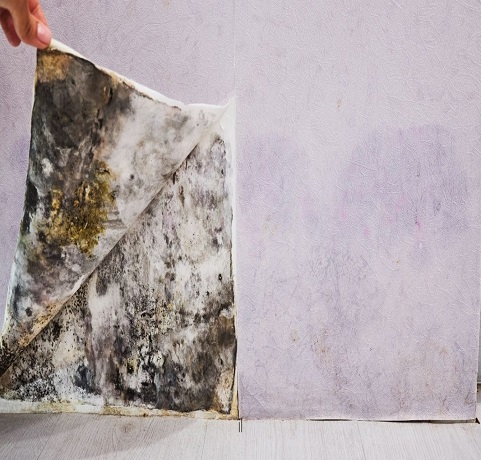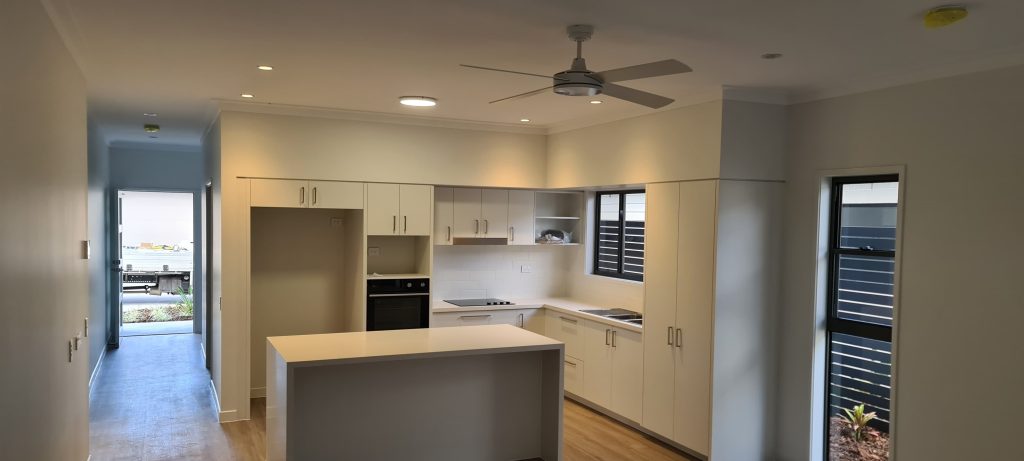Mould can proliferate with alarming speed in your home after experiencing water damage, particularly in environments characterized by high humidity, inadequate ventilation, and a lack of sunlight. This is a prevalent issue affecting many households in Australia, and if left unaddressed, it can result in significant repair costs and serious health risks. By learning to identify the early signs of mould growth, homeowners can take proactive measures to mitigate these dangers before they worsen. Taking swift action not only protects your property but also helps ensure a safe and healthy living environment for you and your family.
As we all know, mould is an unwelcome presence that can cause severe health risks for everyone in the household, particularly those with pre-existing respiratory conditions. Mould can spread rapidly when exposed to excess moisture, making it essential to recognize this threat early on. Understanding how quickly mould can develop empowers homeowners to implement effective preventive measures against potential water damage and the complications that may follow, fostering a safer and healthier living space for all family members.
This article will provide you with essential insights regarding the rapid growth of mould following water-related incidents. We will explore the underlying causes of this phenomenon and outline the critical steps to take if you find yourself facing this challenging situation. Join us as we examine the swift development of mould and the effective actions you can take to address it!

Spotting the Key Indicators of Mould Infestation in Your Home
Mould is a type of fungus that can flourish in your home if specific preventative measures are not taken. It often appears as a slimy, foul-smelling growth, typically showing up in shades of green or black. These fungi thrive in moist environments, making areas affected by water damage or those with high humidity levels particularly susceptible to mould infestation. Early recognition of these conditions is crucial for effective remediation and can save you time and money in the long run.
Several clear indicators suggest that mould has taken root in your living space.
- A musty odour is one of the most common signs of mould presence, indicating that it may be growing in hidden areas and requiring immediate attention!
- Another notable symptom is the appearance of discolouration on walls or flooring. Mould often exhibits irregular patterns and may appear darker than the surrounding surfaces, signaling the need for further investigation.
- Be vigilant for any warping or bubbling of paint or wallpaper, as these can signal underlying water damage and the potential for mould growth.
If any of these warning signs are apparent, it is essential to seek professional assistance promptly. Experts can conduct a thorough assessment of the situation and provide guidance on managing any existing mould. Remember, the quicker you act, the easier and more cost-effective it will be to control mould growth rather than attempting to eliminate it after it has become established in your home.
Understanding the Types of Water Damage That Encourage Mould Growth
While mould can pose a significant concern for homeowners, understanding its root causes is vital for effective prevention. By identifying the various sources of water damage that contribute to mould proliferation, you can better safeguard your living environment and maintain a healthy atmosphere for yourself and your loved ones.
Multiple factors contribute to mould growth following water damage. Even minor leaks can create ideal conditions for mould spores to thrive and multiply. Areas lacking adequate airflow or ventilation pose heightened risks for mould proliferation, as stagnant air can trap moisture and contribute to a damp environment. Furthermore, damp spaces such as crawl spaces or roof cavities with elevated humidity levels are particularly vulnerable to mould infestations, making regular checks crucial for maintaining a safe home.
The good news is that you can implement straightforward yet effective measures to prevent significant mould issues. Regularly inspecting your home for signs of moisture or water damage and maintaining low humidity levels can greatly reduce the risk of mould growth. Don’t wait for the situation to worsen—take proactive steps now to protect your family’s health and ensure peace of mind in your home.
Examining the Conditions That Accelerate Mould Proliferation
Having established that water damage and specific environmental conditions can lead to mould growth, let’s delve into how quickly this process can occur.
Under optimal conditions, mould can proliferate at an alarming rate. Mould spores can colonise a damp surface within just 24 to 48 hours! This rapid growth can have severe implications for both your health and your property, making it crucial to act swiftly and decisively when water damage occurs.
So, what specific conditions contribute to this swift mould proliferation? Mould requires certain elements to thrive, including:
- Moisture: Mould flourishes in damp environments; hence, high humidity levels or wet surfaces are ideal for its growth.
- Temperature: Most mould species thrive in warm temperatures, typically between 16 °C and 27 °C, although some can even grow at lower temperatures.
- Nutrients: Mould relies on organic materials to survive—these can include wood, paper, drywall, and textiles commonly found in homes.
- Darkness: Mould can thrive in dark areas and does not require sunlight for growth, making poorly lit spaces particularly susceptible.
- Airflow: Insufficient ventilation can lead to elevated moisture levels, creating an environment conducive to mould growth.
- Time: Given the right conditions, mould can grow and spread rapidly, underscoring the importance of vigilance in monitoring for potential infestations.
To effectively stave off mould growth, it is vital to control moisture levels within your home, ensure proper ventilation, and seek the expertise of skilled technicians to promptly address any instances of water damage or leaks. Taking these steps is crucial for maintaining a safe and healthy living environment.
Effective Strategies for Mould Remediation and Prevention
Now that we understand the risks associated with mould growth, let’s explore effective methods for addressing and preventing it. The first crucial step is to identify and remediate any water damage as thoroughly as possible. This includes repairing leaky pipes, ensuring that your gutters are functioning properly, and investigating any other potential sources of hidden moisture that could contribute to mould growth.
Once you’ve tackled these immediate concerns, consider investing in a whirlybird ventilation system or an air conditioning unit to maintain low humidity levels and deter future mould growth. Such proactive measures can save you from costly repairs and health issues down the line.
Additionally, maintain a vigilant eye on your home in the weeks following remediation. If you notice any early warning signs of mould re-emerging, do not hesitate to consult a professional for guidance. The sooner you address potential issues, the better! Ultimately, preventing mould from developing in the first place is far more effective than dealing with its aftermath and the complications that can arise.

The Importance of Hiring Professional Mould Inspection and Testing Services
If you are uncertain about the mould situation in your home, seeking professional assistance can provide you with peace of mind. Experts equipped with specialized knowledge and tools can quickly identify hidden mould growth, allowing you to address potential problems before they escalate into significant issues that could threaten your health and well-being.
If mould has already taken hold, there’s no need to worry—professional remediation services are available to help eliminate existing mould colonies. These qualified experts utilize industrial-strength cleaners and advanced techniques to ensure your home is safe again, alleviating concerns about long-term damage and health risks. Many companies even offer free estimates for their services, enabling you to avoid unexpected costs and feel confident in your decisions moving forward.
If you suspect mould lurking in your home, do not hesitate to seek professional help. Prompt action could save you money and create a healthier, stress-free environment for you and your family!
Expert Mould Remediation Services Provided by The Mould Removers
If you are dealing with a mould issue, it’s crucial not to resort to DIY methods. Instead, contact the skilled mould removal professionals at The Mould Removers. Their expertise in mould remediation ensures not only effective removal but also your safety throughout the entire process.
With their extensive knowledge and experience in mould removal services, you can feel confident that harmful mould colonies will not return anytime soon. Don’t hesitate—call now to address your mould concerns and reclaim the comfort and safety of your home!
The Article: Mould Growth Speed After Water Damage: What to Know first appeared on https://writebuff.com.
The Article Mould Growth Speed: Key Insights After Water Damage Was Found On https://limitsofstrategy.com


No responses yet